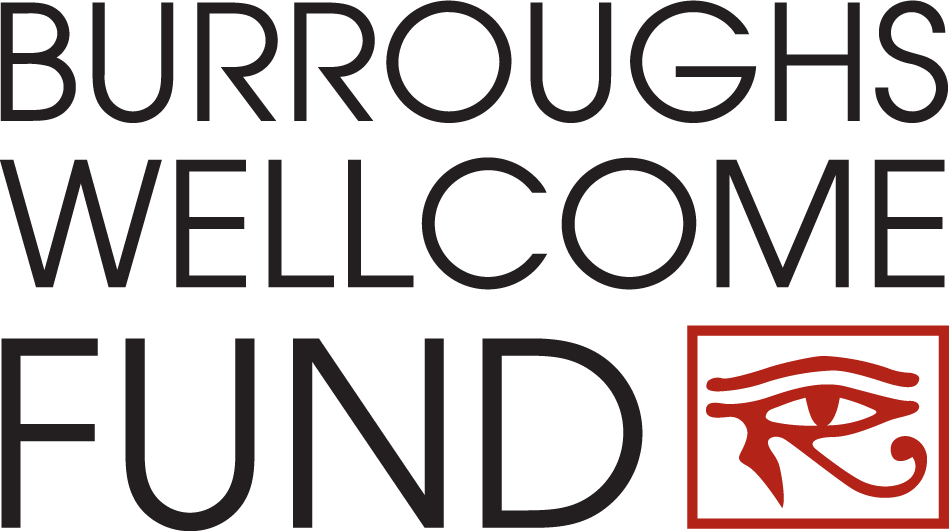Nov-Dec 2018

The Burroughs Wellcome Fund’s mission is to advance biomedical science by supporting research and other educational activities. This newsletter is a curated sample of research and activities conducted by recipients of Fund support.
Upcoming grant deadlines:
Collaborative Research Travel Grants | Deadline: Feb. 1, 2019
Innovation in Regulatory Science Award | Deadline: Feb. 6, 2019
Physician-Scientist Institutional Program | Deadline: Feb. 15, 2019
Career Guidance for Trainees Grant | Deadline: March 6, 2019
Student STEM Enrichment Program | Deadline: April 16, 2019
Features
BWFund.org, 11-22-2018
Dr. Kelly Chavez Rose Joins the Fund
Dr. Miquella (Kelly) Chavez Rose will join the Burroughs Wellcome Fund as a program officer on January 7, 2019. Dr. Rose will oversee the Interfaces in Science and the Regulatory Science programs, which invest a combined $10 million a year in biomedical research.
Inside Higher Ed, 11-05-2018
There’s Plenty of Time Left in 2018
How can you make the most of the rest of the year? Victoria McGovern explores some ways to answer that question.
Victoria McGovern is a senior program officer at the Burroughs Wellcome Fund and a member of the Graduate Career Consortium
Research
College of Engineering, 11-02-2018
New technology for controlling neural tissue manufacturing
This work was made possible by grants from the National Science Foundation, the National Institutes of Health, the Environmental Protection Agency, the National Institute of Neurological Disorders and Stroke, and the Burroughs Wellcome Fund.
Cells in the human body destined to become part of the central nervous system–like the brain and spinal cord, for example–do remarkable things. As the cells differentiate in vivo, they organize themselves into a single epithelial tube, the starting point from which the entire central nervous system develops. A paper published this week in eLife from Biomedical Engineering Assistant Professor Randolph Ashton’s lab details a new method of reliably recreating this self-assembly in vitro.
Medical Xpress, 11-15-2018
Bringing artificial limbs to patients who need them
…with support from the Burroughs Wellcome Fund…
Wilson’s study vets two broad categories of prosthetic technology–osseointegration implants and myoelectric control–rather than any particular product. The data promises to help manufacturers, private and public, who are trying to strike a balance between durability, safety, functionality, and appearance in the new devices. It will also help the FDA with their approval decisions.
University of California San Francisco, 11-15-2018
New ‘SLICE’ Tool Can Massively Expand Immune System’s Cancer-Fighting Repertoire
Marson holds a Career Award for Medical Scientists from the Burroughs Wellcome Fund and is an investigator at the Chan Zuckerberg Biohub.
The New CRISPR-Based System Will Open the Door to Next-Generation Targeted Immunotherapies
EurekAlert!, 11-19-2018
Two thirds of required pediatric post-marketing drug studies are missing
This work was supported by a grant from the Burroughs Wellcome Fund.
In the JAMA Pediatrics study, Bourgeois and colleagues assessed the implementation of these post-marketing studies from 2007 to 2014, including both new drugs and new indications for already-approved drugs. During that time frame, the FDA approved 114 new drugs and new indications subject to pediatric study requirements under PREA. A total of 222 pediatric post-marketing studies were required for these drug approvals.
EurekAlert!, 11-26-2018
Cancer researchers ID ‘Achilles heel’ of drug-resistant tumors
Marson holds a Career Award for Medical Scientists from the Burroughs Wellcome Fund and is an investigator at the Chan Zuckerberg Biohub
UC San Francisco scientists have figured out why some lung cancers become drug-resistant after initially responding to targeted therapies. In the process, they devised a new two-pronged approach that yields an effective treatment for these cancers in the laboratory and holds tremendous promise for the future of precision medicine, they said. The findings are detailed in a study published Nov. 26 in the journal Nature Medicine.
EurekAlert!, 11-28-2018
Easy to use 3D bioprinting technique creates lifelike tissues from natural materials
This work was supported by UC San Diego Institutional Funds, the Burroughs Wellcome Fund, the March of Dimes Foundation…
Bioengineers at the University of California San Diego have developed a 3D bioprinting technique that works with natural materials and is easy to use, allowing researchers of varying levels of technical expertise to produce lifelike organ tissue models.
Stanford Medicine, 12-04-2018
Honeybee protein keeps stem cells youthful
The research was supported by the National Institutes of Health, the National Science Foundation, a National Defense Science and Engineering Graduate fellowship, the Stanford Maternal & Child Health Research Institute, the Burroughs Wellcome Fund and the Donald E. and Delia B. Baxter Foundation. Stanford’s Department of Dermatology also supported the work.
An active protein component of royal jelly helps honeybees create new queens. Stanford researchers have identified a similar protein in mammals, which keeps cultured embryonic stem cells pluripotent.
EurekAlert!, 12-05-2018
New study uncovers why Rift Valley fever is catastrophic to developing fetuses
This research was funded by National Institutes of Health grants, as well as an Investigators in the Pathogenesis of Infectious Disease Award from the Burroughs Wellcome Fund.
Like Zika, infection with Rift Valley fever virus can go unnoticed during pregnancy, all the while doing irreparable – often lethal – harm to the fetus. The results of a new study, led by researchers at the University of Pittsburgh Center for Vaccine Research (CVR), underscore the importance of disease prevention for pregnant women and set the stage for vaccine development.
EurekAlert!, 12-10-2018
New light on blocking Shiga and ricin toxins — And on an iconic biological process
The current study was funded by the National Institutes of Health, the Boston Children’s Hospital Intellectual and Developmental Disabilities Research Center, Intelligence Advanced Research Projects Activity (IARPA) and the Burroughs Wellcome Fund.
Min Dong, PhD, and his lab are world experts in toxins and how to combat them. They’ve figured out how Clostridium difficile’s most potent toxin gets into cells and zeroed in on the first new botulinum toxin identified since 1969. Now, setting their sights on Shiga and ricin toxins, they’ve not only identified new potential lines of defense, but also shed new light on a fundamental part of cell biology: glycosylation.
MIT News, 12-17-2018
Mapping the brain, cell by cell
The research was funded by the Burroughs Wellcome Fund Career Award at the Scientific Interface, the Searle Scholars Program, the Packard Award in Science and Engineering, the NARSAD Young Investigator Award, the McKnight Foundation Technology Award, the JPB Foundation, and NCSOFT Cultural Foundation, and the National Institutes of Health.
MIT chemical engineers and neuroscientists have devised a new way to preserve biological tissue, allowing them to visualize proteins, DNA, and other molecules within cells, and to map the connections between neurons. The researchers showed that they could use this method, known as SHIELD, to trace the connections between neurons in a part of the brain that helps control movement and other neurons throughout the brain.
EurekAlert!, 12-20-2018
Researchers make world’s smallest tic-tac-toe game board with DNA
Funding was provided by the Burroughs Wellcome Fund, the Shurl and Kay Curci Foundation, the National Institutes of Health, and the National Science Foundation.
It was just about a year ago that Caltech scientists in the laboratory of Lulu Qian, assistant professor of bioengineering, announced they had used a technique known as DNA origami to create tiles that could be designed to self-assemble into larger nanostructures that carry predesigned patterns.
Education
EducationNC, 12-18-2018
A recap of the Postdoctoral Enrichment Program Twitter chat
Abdus-Saboor is now the Mitchell J. and Margo K. Blutt Presidential Assistant Professor of Biology at the University of Pennsylvania, and Musah is Assistant Professor of Biomedical Engineering at Duke University. Their three-year, $60,000 PDEP award was granted by the Burroughs Wellcome Fund.
On Dec. 12, I moderated a live Twitter chat with Ishmail Abdus-Saboor and Samira Musah, fellows of the Postdoctoral Enrichment Program (PDEP).
The Daily Advance, 11-30-2018
ECSU to form drone academy
The campus announced this week it received a grant from the Burroughs Wellcome Fund for nearly $180,000 to form a Drone Exploration Academy for middle and high school students.
The goal of the academy, according to Rawat, is to capitalize on the increasing popularity of drones in order to spark student interest in science, mathematics, engineering and technology — disciplines commonly referred to as STEM.


Comments are closed.